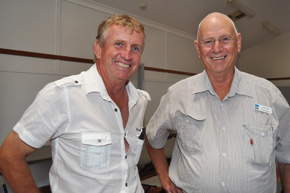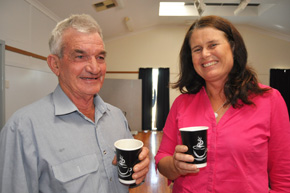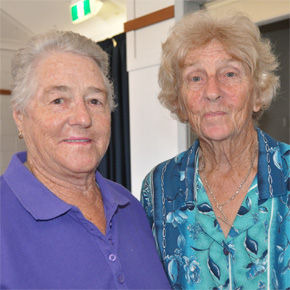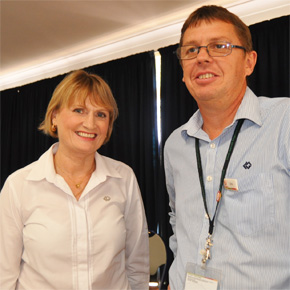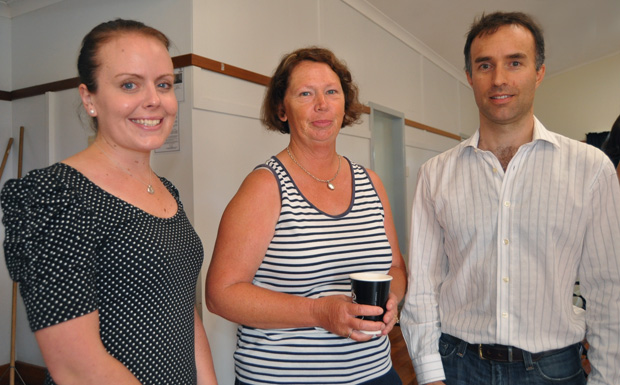
January 17, 2013
A majority of local residents surveyed in a recent telephone poll support future wind farms in the South Burnett / Dalby area.
According to the polling, commissioned by energy company AGL, 45 per cent “support” and 21 per cent “strongly support” future wind farms in the region.
AGL wants to build a massive wind farm development at Coopers Gap, between Kingaroy and Dalby.
The polling revealed that while a majority of local residents support the project, 39 per cent believe it could have an adverse affect on property values. And 25 per cent of residents polled who live within 15km of the project site oppose the development.
The Coopers Gap proposal has sparked loud debates between supporters, including landholders who will host the turbine towers and earn revenue, and other local residents who have cited fears about noise, health concerns and visual amenity.
The polling was conducted by social research company QDOS Research in December last year. Five hundred people were surveyed, including 400 local residents and 100 from a broader area of Queensland. Of the local residents queried, 53 resided within 15km of the Coopers Gap project; the rest lived within 50km (including residents in Kingaroy and Dalby).
Preliminary results were presented to today’s Coopers Gap Community Consultative meeting in Kingaroy (see more results below).
The consultative group meets monthly, but this is the first time it has met in Kingaroy.
* * *
AGL Project Manager Evan Carless provided an overview of the current status of the project and outlined what the next steps would be:
- The initial environmental assessment report was released in March 2011.
- A revised report is currently under preparation and should be released within two months.
- Submissions would then be sought from the community and agencies on this revised report.
- A final assessment report would then be prepared and lodged with the State Government.
- After a determination by the State Government, AGL would make an investment decision, ie whether to proceed or not. The company would look at the current market conditions and the regulatory framework, including what renewable energy targets had been set by the government.
- If AGL decides to proceed, a construction contract would be awarded after a lengthy tendering process.
- The pre-construction phase would last between three and six months and would include recruiting a workforce.
- The actual construction phase would last 30 months.
Mr Carless said AGL was aiming to to submit its application to the State Government later this year, however there was no statutory timeframe within which the government must make a decision. Consultants had advised this could take from six to 12 months.
If this was the case, it could be the end of 2014 before an investment decision could be made and the construction put out to tender. Under this timeframe, the actual construction work would begin in mid-2015.
* * *
How many turbines are likely to be constructed at Coopers Gap?
“Because we are still revising our assessment report, the shape of the wind farm is quite likely to change,” Mr Carless said.
The number of turbines could increase or decrease but “there is a high probability of change”. In the same way, the projected power output of the project could also change.
* * *
|
AGL Community Engagement Officer Amanda Shaw reviewed the topics the consultative committee had originally identified for discussion when it first met:
- Noise and setbacks (ie how far the turbines must be located from property boundaries and residences)
- Health impacts, shadow flicker and electromagnetic interference
- Traffic and construction impact
- Impact on property values
- Impact on flora and fauna
A committee member commented that it was a “different” committee now than when these topics were drawn up (see sidebar, right) and some of the priorities of the current committee were different.
The “tone” of the committee had also changed, she said, as it was less adversarial.
However it was agreed that further discussion was required on property values, traffic management and potential benefits to the community.
A property valuer / estate agent would be organised to speak to the next meeting about the effect wind farms had had on property values elsewhere.
A more detailed discussion on traffic management would be held before any construction starts; large-scale movements of vehicles is expected to occur only during the construction phase.
* * *
Submissions from the South Burnett Regional Council and the Western Downs Regional Council were summarised by AGL:
South Burnett topics:
- Legislative framework
- Land use and planning
- Noise – how it will impact humans and livestock
- Socio-economic assessment
- Access and traffic
- Shadow flicker
- Health
- Siting of turbines
- Community fund
Western Downs topics:
- Community engagement, including engaging with local contractors
- Cultural heritage
- Land use and planning
- Landscape and visual impact assessment
- Noise
- Socio-economic assessment
- Access and traffic
- Aviation
- Electromagnetic interference
- Environmental management plan
- Health
South Burnett Regional Council representative Chris Du Plessis said he believed the State Government would release guidelines for wind farm developments within the next six months. He had been told the State Government would be the body assessing the Coopers Gap development, not council.
Western Downs Regional Council committee representative Jane Holdsworth said her council had in place a program which would be able to engage immediately between the construction contractors and local businesspeople.
Both councils said they were interested in the establishment of community development funds.
* * *
Some more key findings from the poll:
- 75 per cent of local residents had heard either a little or a lot about the Coopers Gap project
- 64 per cent thought it would be good for the environment globally
- 58 per cent thought it would be good for local jobs; 31 per cent thought it would make no difference
- 42 per cent thought it would make no difference to the local environment; 35 per cent said it would be good
- 44 per cent thought it would make no difference to the visual appeal and general amenity of the area; 31 per cent said it would be good
- 76 per cent thought it would make no difference to their business
- 51 per cent thought it would make no difference to their health; 19 per cent thought it would be bad; 15 per cent thought it would be good; and 15 per cent didn’t know
- 58 per cent thought it would make no difference to livestock
- 39 per cent thought it would be bad for property values; 31 per cent thought it would make no difference; 19 per cent thought it would be good; and 12 per cent didn’t know
- 41 per cent thought it would make no difference to noise levels; 31 per cent thought it would be bad; 10 per cent thought it would be good and 19 per cent didn’t know
Related articles
- Mayor Upset By Wind Farm ‘Misinformation’
- Pro-Wind Farm Group Meets In Dalby
- Frustration Over Wind Farm Limbo
- Xenophon Offers To Talk To Residents
- Council Wants 2km Buffer Zone Around Wind Farms
- MP Calls For 2km Zone Around Wind Farm
- Committee Formed To Discuss Wind Farm Proposal
- Mayor-Elect Wants Council To Take Lead Role







